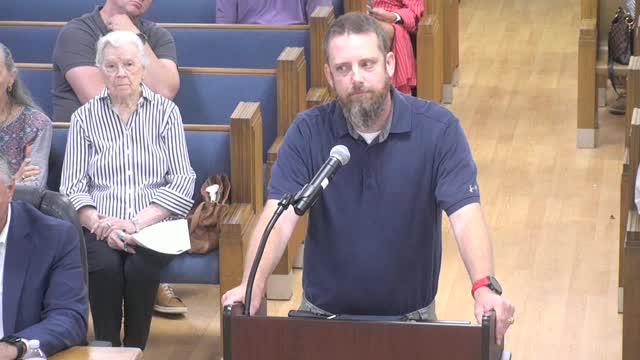County Officials Review Utility Permit Processes Following Subcontractor Issues
August 06, 2025 | Waller County, Texas
This article was created by AI summarizing key points discussed. AI makes mistakes, so for full details and context, please refer to the video of the full meeting. Please report any errors so we can fix them. Report an error »

In the heart of Waller County, Texas, a recent Commissioners Court meeting illuminated pressing concerns about utility management and infrastructure oversight. As the sun dipped below the horizon, officials gathered to address the complexities surrounding utility installations and the challenges posed by subcontractors.
A key discussion point revolved around the installation of distribution lines by a contractor, which raised questions about compliance with county regulations. One commissioner expressed frustration over the lack of communication from the contractor regarding permits, emphasizing the need for proactive measures rather than reactive responses to issues that arise. “We need to stay on top of this,” he urged, highlighting the importance of maintaining oversight to prevent future complications.
The conversation took a turn as the commissioners reflected on past incidents involving utility work, including a notable case where a contractor inadvertently damaged a water line in Hempstead. This incident underscored the potential risks associated with inadequate oversight and the necessity for stringent permitting processes. The commissioner noted that the city of Katy had taken a firm stance, halting all work by the contractor until legal matters were resolved, a move that sparked interest in whether Waller County could implement similar measures.
As discussions progressed, the need for more inspection resources became apparent. Currently, the county operates with only two inspectors to oversee all utility projects, a situation that many officials deemed insufficient. “If we had more inspectors, we could ensure compliance and safety,” one commissioner remarked, suggesting that an increase in inspection staff could significantly enhance the county's ability to manage utility installations effectively.
The meeting concluded with a commitment to explore potential changes to the permitting process and to consider future discussions on increasing inspection capabilities. As Waller County navigates the complexities of utility management, the emphasis remains on safeguarding community interests and ensuring that infrastructure developments proceed smoothly and responsibly. The path forward may involve not only stricter regulations but also a collaborative effort among local officials and utility providers to foster a safer environment for all residents.
A key discussion point revolved around the installation of distribution lines by a contractor, which raised questions about compliance with county regulations. One commissioner expressed frustration over the lack of communication from the contractor regarding permits, emphasizing the need for proactive measures rather than reactive responses to issues that arise. “We need to stay on top of this,” he urged, highlighting the importance of maintaining oversight to prevent future complications.
The conversation took a turn as the commissioners reflected on past incidents involving utility work, including a notable case where a contractor inadvertently damaged a water line in Hempstead. This incident underscored the potential risks associated with inadequate oversight and the necessity for stringent permitting processes. The commissioner noted that the city of Katy had taken a firm stance, halting all work by the contractor until legal matters were resolved, a move that sparked interest in whether Waller County could implement similar measures.
As discussions progressed, the need for more inspection resources became apparent. Currently, the county operates with only two inspectors to oversee all utility projects, a situation that many officials deemed insufficient. “If we had more inspectors, we could ensure compliance and safety,” one commissioner remarked, suggesting that an increase in inspection staff could significantly enhance the county's ability to manage utility installations effectively.
The meeting concluded with a commitment to explore potential changes to the permitting process and to consider future discussions on increasing inspection capabilities. As Waller County navigates the complexities of utility management, the emphasis remains on safeguarding community interests and ensuring that infrastructure developments proceed smoothly and responsibly. The path forward may involve not only stricter regulations but also a collaborative effort among local officials and utility providers to foster a safer environment for all residents.
View full meeting
This article is based on a recent meeting—watch the full video and explore the complete transcript for deeper insights into the discussion.
View full meeting
